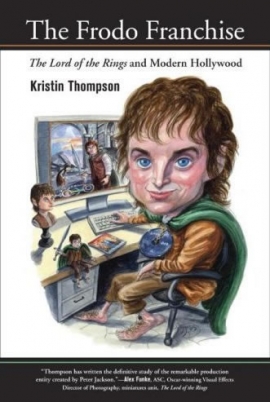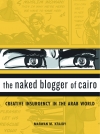
Taking Lord of the Rings (LOTR) as her case study, Kristin Thompson illustrates how the films set landmark precedents for the relationship between studios and video game developers, fused indie and blockbuster sensibilities, invigorated the struggling DVD market, and transcended the fantasy genre to become a hybrid-genre movie that appealed to a broad audience. Thompson also shows how the fantasy trilogy helped New Zealand construct a world-class filmmaking infrastructure and led to important advances in filmmaking technology.
In each of her chapters, Thompson blends approachable prose with subtle analysis, delivering both a production history and a delicate mapping of the transnational franchise production process. The Frodo Franchise has significant value as thick case study of a major franchise production and is emblematic of a middle-range approach to media analysis, one that asks precise questions about media products, their makers, and their audiences. For instance, in Frodo Franchise,Thompson asks: what were the legal, economic, global, and industrial conditions that made LOTR possible? And, more importantly, how did the individuals involved in its production negotiate, manipulate, or bolster these larger structural forces?
It’s this delicate balance between the macro and the micro that makes her analysis so compelling. Early in the book, for example, Thompson recounts Peter Jackson’s successful attempt in 1998 to sell the film to New Line Cinema by simply showing a 30-minute demo reel to the company’s Founder and Co-President, Bob Shaye. Popular press accounts frame the decision as “a risky, quirky $270 million throw of the dice” (30). It certainly makes for a great Hollywood story about Shaye’s creative instincts, making him willing to gamble on a then-unknown director who was pitching a passion project. In this passage, however, Thompson deconstructs the myth to argue the deal was much less a gamble than it was a highly calculated economic decision. First, she suggests Shaye was already looking for another franchise film, especially one with the built-in fan base of the novels. Second, filming all three movies simultaneously in New Zealand could save on production costs, take advantage of non-unionized labor, and secure long-term contracts with actors before they became household names. Finally, the films already had 18 months of financed pre-production completed, and New Line could pre-sell global distribution and merchandising rights to help cover the cost of filming upfront. Such concrete reasons for Shaye’s decision often remain absent from popular narratives concerning LOTR’s precarious beginnings, but Thompson’s middle range approach effectively demonstrates how these individual actions are couched in the larger operations of media institutions.
Thompson, Kristin. The Frodo Franchise: The Lord of the Rings and Modern Hollywood. Los Angeles, CA: University of California Press, 2007.






